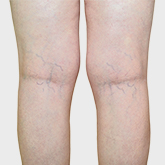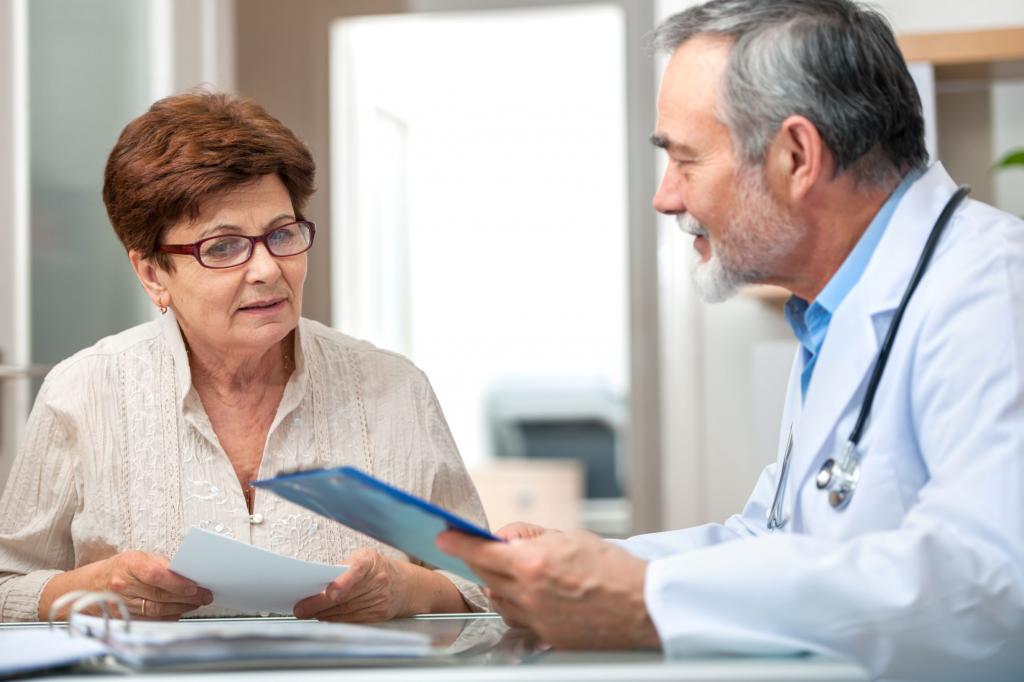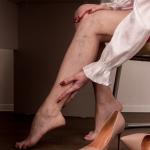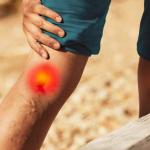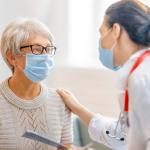
Do Tiny Veins Affect Blood Pressure?
A tiny vein just beneath the skin’s surface may indicate an underlying disease. Although many people are concerned with the cosmetic aspect of varicose veins, others suffer from health consequences like high blood pressure. Most people with hypertension have narrowed arteries, which is the underlying cause of the disease.
Veins under your skin that are thin, colorless, and vary in size and shape are called spider veins or varicose veins. The narrower the arteries, the higher the blood pressure, even though the same amount of blood flows through them. Even if the veins are constricting, blood can be forced into the arteries. As a result of this, blood pressure can increase.
Persistent high blood pressure may harm the arteries as well as put strain on the heart. If you believe you are suffering from high blood pressure as a result of vein disease, please contact us to schedule an appointment with one of our vein specialists at USA Vein Clinics.
What are Thin Veins and Do they Affect Blood Pressure?
Thin veins, often referred to as superficial veins, are blood vessels located close to the surface of the skin. They are part of the venous system responsible for returning deoxygenated blood from the tissues back to the heart. Tiny veins, also known as venules, play a role in the circulatory system but have a limited direct effect on blood pressure compared to larger blood vessels like arteries and arterioles. Here’s a breakdown of their role:
- Venules and Blood Return: Venules collect blood from capillaries and transport it to larger veins, which eventually return blood to the heart. The pressure in veins and venules is much lower than in arteries.
- Blood Pressure Regulation: Blood pressure is primarily regulated by the heart (which pumps blood) and the arteries and arterioles (which distribute blood). Arterioles, in particular, can constrict or dilate to increase or decrease resistance, thus directly influencing blood pressure.
- Venous Return and Cardiac Output: While venules themselves don’t regulate blood pressure, the return of blood to the heart (venous return) can indirectly affect blood pressure. Factors that enhance venous return, such as muscle contractions and venous valves, can increase cardiac output, which can influence overall blood pressure.
- Venous System Conditions: Conditions affecting the venous system, like chronic venous insufficiency or varicose veins, typically lead to symptoms like swelling and discomfort but do not directly cause high blood pressure. However, systemic conditions that affect both arterial and venous systems, like heart failure, can impact blood pressure.
In summary, while tiny veins are crucial for blood return, they have a limited direct effect on regulating blood pressure compared to arteries and arterioles.
Why Are My Veins Tiny?
Telangiectasia, or broken capillaries, is another name for spider veins. Despite their small size, these blood vessels are still vital to your circulatory system. The presence of spider veins and varicose veins can signal even greater circulatory problems.
In many instances, vein shrinkage is not a serious issue. Several factors may cause veins to appear to shrink. Aging, a decrease in muscle tone, and weight gain are common reasons for veins appearing smaller. A vein doctor should always be consulted. However, in some cases, it may indicate vein disease. If your veins seem to be shrinking unexpectedly, that can give you peace of mind and improve your self-esteem.
It is common for people to be concerned that they may have a serious circulation problem when they notice their veins are shrinking. The reason why people have this fear is that veins that are smaller may not receive enough blood flow to remain inflated. It makes logical sense, but smaller veins generally do not cause circulation problems.
Tiny veins appearing underneath the skin can be an underlying disease. Just beneath the surface of your skin, the thin spider veins may vary in color. In addition to looking like spider webs, they can look like the pattern on marbles.
What Causes Tiny Veins?
There are small veins in the skin that pool blood near the surface called tiny veins or spider veins. Obesity, heredity, and trauma are some of the factors that can lead to them. Sometimes it is impossible to pinpoint the exact cause of a vein problem. These conditions are more common in pregnant women and people over 30.
Several factors can cause tiny veins, including:
- A lot of standing or sitting
- Genetics
- Obesity
- Pregnancy, puberty, and menopause all have hormonal influences.
- Contraceptives like birth control pills
- A history of blood clots
- Postmenopausal women taking hormone replacement therapy
- Various conditions can increase abdominal pressure.
Can High Blood Pressure Break Tiny Veins?
Whenever a vein experiences high blood pressure, varicose veins develop. Veins can bulge or look unsightly when valves in them break, leading to unsightly veins. Vascular enlargement or twisting is called varicose veins.
The presence of varicose veins can sometimes lead to high blood pressure or a sudden drop in blood pressure if left untreated. Blood vessels can narrow, leak, or rupture as a result of high blood pressure. Additionally, high blood pressure can result in blood clots forming in arteries leading to the brain, blocking blood flow and resulting in strokes.
Leaving high blood pressure untreated can lead to:
- Heart Attack: When the blood pressure is too high, the arteries in the heart can become blocked, preventing blood from flowing to the heart muscle.
- Stroke: Blood vessels that supply the brain with blood and oxygen can become blocked or burst due to high blood pressure.
What Are the Effects of High Blood Pressure on Veins?
High blood pressure damages blood vessels, causing them to narrow, rupture, or leak. As a result of high blood pressure, blood clots can form in the arteries leading to the brain, blocking blood flow and potentially causing a stroke.
When the legs are under excessive pressure because of excess weight, especially around the abdomen area, the blood pressure rises. In addition to interfering with blood circulation, it stretches the skin, increasing the likelihood of capillaries breaking.
Tiny veins, also known as capillaries, play a crucial role in the circulation of blood throughout the body. They are the smallest and thinnest blood vessels, responsible for delivering oxygen and nutrients to tissues and removing waste products. However, their delicate nature makes them susceptible to damage under certain circumstances, especially if blood pressure becomes too high. If the pressure within the circulatory system exceeds the capillaries’ capacity, there is a risk of the tiny veins bursting. This can lead to various complications, such as internal bleeding, bruising, or even more severe consequences, depending on the location and extent of the damage.
What Are the Effects of Small Veins from High Blood Pressure?
As the arteries become narrower, the same amount of blood passes through them more rapidly, increasing blood pressure. As veins constrict, more blood is forced into the arteries because they are unable to hold blood. As a result, blood pressure increases.
There can be years of silent damage to the body before symptoms of high blood pressure appear. Other health problems can arise from uncontrolled high blood pressure.
Tiny vein risk factors include:
- Heart attacks, strokes, and other complications can result from the hardening and thickening of the arteries caused by high blood pressure.
- Aneurysms are caused by weakening and bulging blood vessels as a result of high blood pressure. It is life-threatening if an aneurysm ruptures.
With varicose veins, blood accumulates inside veins when tiny valves stop working properly. When veins become weak due to increased pressure, they are more likely to break. Hypertension of the veins results in problems with the valves when there is high blood pressure in most or all of them. A buildup of pressure affects larger veins in the leg as well as branch veins. Varicose veins are unsightly because they bulge through the skin.
SPIDER VEINS SYMPTOMS AND CAUSES
How to Get Rid of Tiny Spider Veins
The most common small vein treatment is sclerotherapy, and it is the preferred vein treatment. It is a non-surgical procedure and doesn’t require much recovery time. This procedure is more effective at reaching the feeder veins that feed and cause new spider veins. Varicose veins can also be treated with sclerotherapy to restore healthy blood flow.
Sclerotherapy involves injecting a special solution into the vein by a vein specialist. In this case, the solution closes the vein so blood cannot flow through it. Improved circulation results from rerouting blood through healthier veins. In the coming weeks, the veins will collapse and disappear.
Usually, you are able to resume your regular activities the following day. Following your sclerotherapy treatment, you will be provided with aftercare instructions to follow to help with your recovery at home.
For proper diagnosis and effective treatment of spider veins or varicose veins, schedule an appointment with our vein specialist. Most of our vein treatments are minimally invasive and require little to no recovery period, so you can go on with your day quickly.
Contact a Vein Specialist for Tiny Veins
Our vein specialists offer non-surgical, minimally invasive vein disease treatments that are available as outpatient procedures. Blood pressure can affect your veins, and it is recommended to see a vein specialist as soon as possible. You may only need 30 minutes of treatment depending on the severity of your condition. Usually, you can return to normal activities within a week of having your procedure.
USA Vein Clinics treat a variety of vein disease conditions, such as spider veins, varicose veins, and venous ulcers.
We invite you to schedule a consultation online or call 888.768.3467 for more information about which treatment would work best for you if you are risk for symptoms caused by vein disease.

